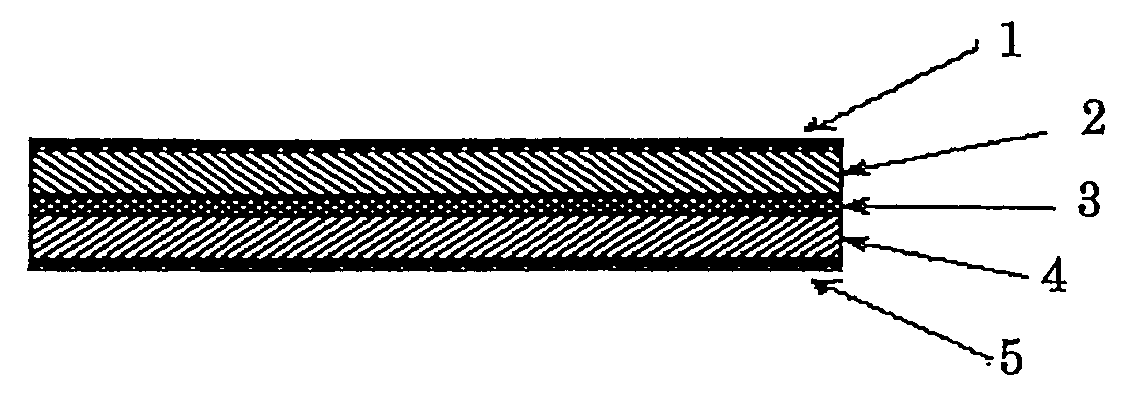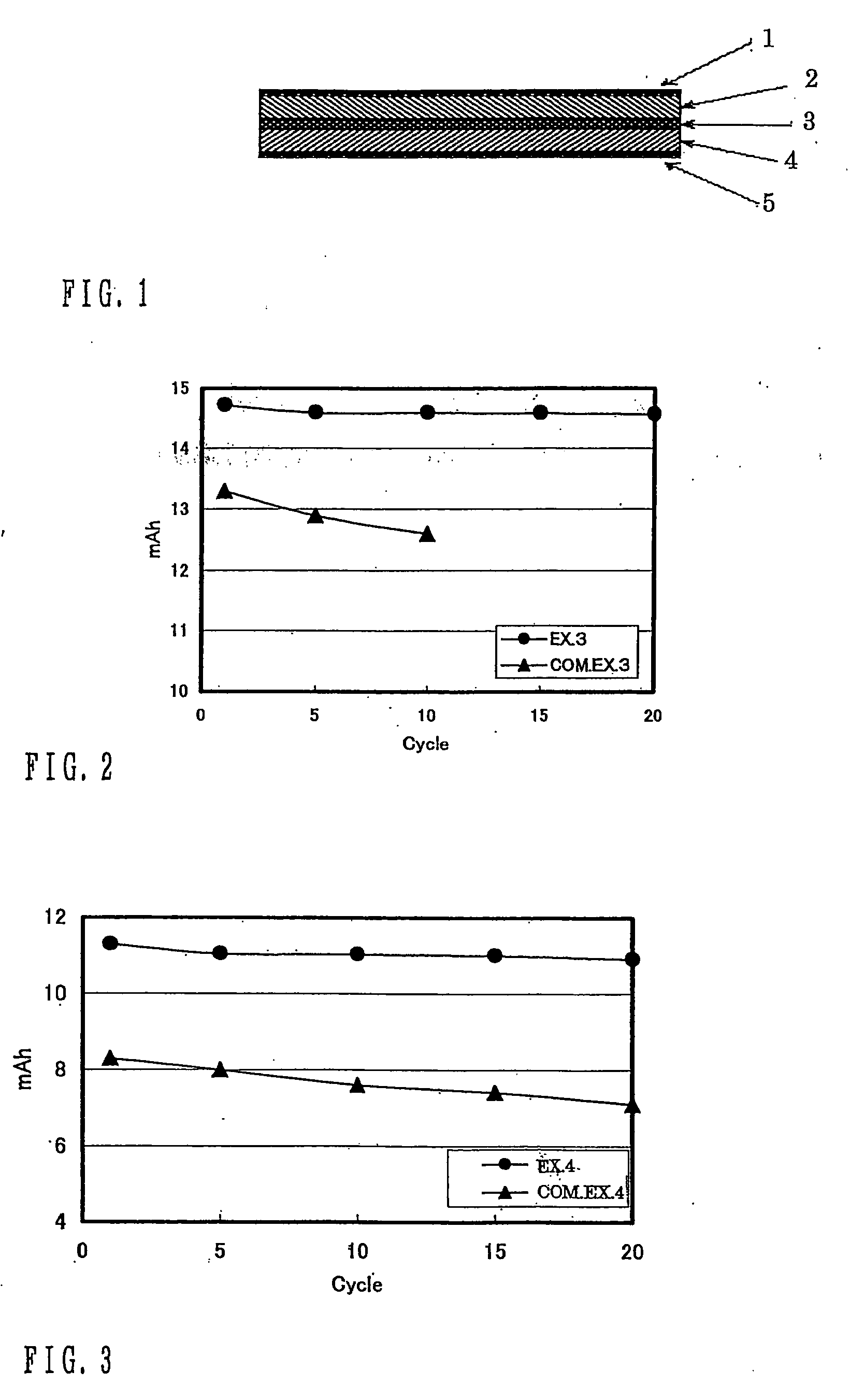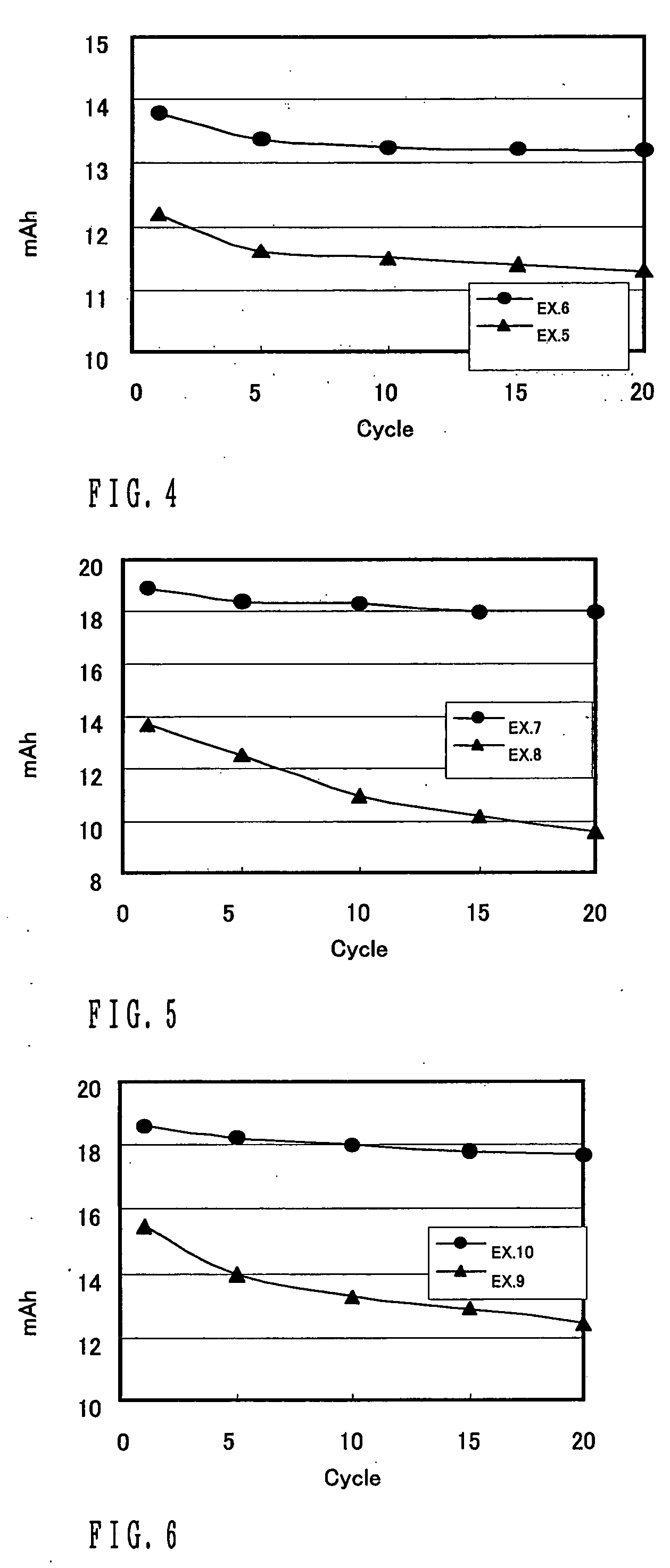Lithium Ion Secondary Battery and a Solid Electrolyte Therefof
- Summary
- Abstract
- Description
- Claims
- Application Information
AI Technical Summary
Benefits of technology
Problems solved by technology
Method used
Image
Examples
example 1
Preparation of Lithium Ion Conductive Glass-Ceramic
[0100] Raw materials of H3PO4, Al(PO3)3, Li2CO3, SiO2 and TiO2 were weighed and mixed uniformly to make a composition of 35.0% P2O5, 7.5% Al2O3, 15.0% Li2O, 38.0% TiO2 and 4.5% SiO2 expressed in mol % on oxide basis. The mixture was put in a platinum pot and was heated and melted in an electric furnace at 1500° C. for three hours while the molten glass was stirred. Then, the melt was dropped into flowing water to produce flakes of glass. The glass was heated at 950° C. for twelve hours for crystallization and the target glass-ceramic was thereby obtained. By powder X-ray diffraction, it was confirmed that the predominant crystal phase precipitating was Li1+x+yAlxTi2−xSiyP3−yO12 (0≦x≦0.4, 0<y≦0.6). Flakes of the glass-ceramic produced were crushed by a ball mill and fine particles of the glass-ceramic having an average particle diameter of 2 μm and maximum particle diameter of 8 μm were obtained.
Preparation of Solid Electrolyte
[...
example 2
Preparation of a Positive Electrode
[0103] As an active material of the positive electrode, a commercially available LiCoO2 (average particle diameter of 6 μm) was used This active material of the positive electrode was mixed with a copolymer of polyethylene oxide and polypropylene oxide added with acetylene black, an electron conduction additive and LiBF4, a lithium salt used as an ion conduction additive and a binder in an ethanol solvent. This mixture was coated uniformly on an aluminum sheet having thickness of 16 μm which constituted a positive electrode collector and was dried at 120° C. to produce a positive electrode in the form of a sheet. This positive electrode had thickness of 100 μm.
Preparation of a Negative Electrode
[0104] As a negative electrode, a commercially available graphite powder (average particle diameter of 10 μm) was used. This negative electrode material was mixed with a copolymer of polyethylene oxide and polypropylene oxide added with LiBF4, a lithium...
example 3
Preparation of a Solid Electrolyte
[0108] The glass-ceramic powder obtained in Example 1 was mixed uniformly with a copolymer of polyethylene oxide, polypropylene oxide and 2-methoxyethoxyethylglicidyl ether added with LiTFSI (lithium bistrifluoromethyl sulfonyl imide) at a ratio of 75:25 in a solvent of ethyl methyl ketone. The mixture was then coated on a PET film which had been applied with a treatment for releasing and dried at a room temperature and then further dried under reduced pressure at 130° C. for removing the solvent by evaporation. Another PET film which had been applied with a treatment for releasing was adhered to the solid electrolyte thus obtained. The composite electrolyte was then heated at 130° C. and was pressed by a roll press to remove bubbles remaining in the composite electrolyte. Then, the PET films on both sides of the solid electrolyte were stripped off. The solid electrolyte obtained had thickness of 35 μm.
Preparation of a Positive Electrode
[0109] ...
PUM
 Login to View More
Login to View More Abstract
Description
Claims
Application Information
 Login to View More
Login to View More - R&D
- Intellectual Property
- Life Sciences
- Materials
- Tech Scout
- Unparalleled Data Quality
- Higher Quality Content
- 60% Fewer Hallucinations
Browse by: Latest US Patents, China's latest patents, Technical Efficacy Thesaurus, Application Domain, Technology Topic, Popular Technical Reports.
© 2025 PatSnap. All rights reserved.Legal|Privacy policy|Modern Slavery Act Transparency Statement|Sitemap|About US| Contact US: help@patsnap.com



